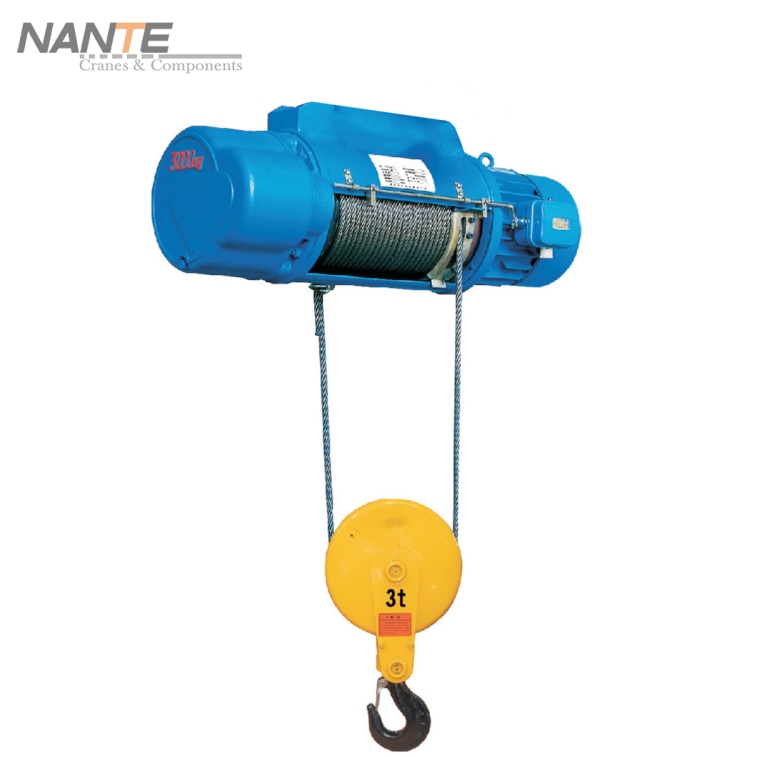Understanding the Critical Role of Hoists in Construction
Date: 2024-10-08 Share:
Importance of Hoists in the Construction Industry
To facilitate the transportation of heavy materials and equipment, hoists are widely applied in the construction industry. The implementation of hoists in the construction operation provides companies with excellent opportunities to raise safety standards to the level necessary to ensure their workers and improve productivity. With the help of hoists, it is possible to decrease the risks of heavy load manual handling as the workforce that is in charge of fastening and detaching loads has nothing to do with transporting them. To sum up, following the construction industry development, hoists also become essential as a consequence.
Enhancing Safety Standards
Minimizing Worker Fatigue and Injuries
Hoists constitute a mechanism that aids in lifting, positioning, and lowering materials, thereby doing away with the need for construction workers to manually exert themselves to undertake these tasks. When the physical labor of lifting and moving objects is reduced, the incidence of physical injury to workers such as strains and sprains becomes almost nonexistent. By ensuring that workers are unlikely to be injured in the course of their duties, hoists protect their well-being and encourage construction companies to implement safe conditions in the workplace.
Increasing Efficiency and Productivity
Reducing Load Handling Time
Hoists provide a much quicker and easier way of loading and unloading. These machines accelerate the process. They not only facilitate the movement of materials but also increase the number of loads that can be carried. Hoists reduce the time used for handling, hence, enabling completion of the project in a short time. This is vital for enhancing workflow at a construction site where there are deadlines to be met.
Optimizing Workforce Allocation
Construction companies can optimize workforce allocation by using hoists. The time users save when they lift in a mechanized context is better spent on other vital productivity aids. When a smaller number of workers are involved in lifting, management can deploy resources more effectively.
Varieties of Hoists in Construction
Manual Hoists
Common Applications
Manual hoists are still a practical and often-used option in a variety of construction situations. They are very useful for a number of small tasks that should be done manually and are also often quite handy in places, where the use of bigger hoisting machinery would be complicated. Among typical tasks, in which manual hoists are involved, are lifting and transporting tools, small machines, and materials. They may not require too much physical force in particular cases, however, manual work is still necessary. Doing such tasks manually instead of mechanically also often increases safety.
Key Advantages
While enormous items continue to gain relevance and size in the construction marketplace, the humble manual hoist is an excellent method for moving goods up and down the work site. Among the equipment’s primary advantages, perhaps one of the most critical is cost-effectiveness. Manual hoists, for example, do not require expensive installations and are not electricity-dependent. Overall, it is a highly economical option for subcontractors and small operations. Greater flexibility, portability, and, therefore, adaptability also contribute to the product’s universal appeal.
Electric Hoists
Features and Benefits
It is obvious that electric hoists are fast and powerful, as they can lift heavy loads with relatively little effort. Moreover, they are equipped with such a feature as variable speed control, which makes their use even more versatile. It is especially practical in the construction environment, where different materials are lifted to different heights and require various speeds at the same time.
Nante Crane Electric Hoist Models
Nante Crane delivers a variety of electric hoists devoted to heavy-duty procedures. With built-in safety features and user-friendly controls, Nante Crane electric hoists ensure both secure and productive applications. The sturdy design along with the unique peculiarities of Nante Crane electric hoists supplies the field of construction with a great potential for lifting and safe procedures.
Pneumatic Hoists
Situational Advantages
A pneumatic hoist is specifically designed to lift materials in locations where the use of electrical equipment is hazardous to the workers. The hoist uses air pressure as the fundamental technology, which also qualifies the hoist for any task in the sector of mining, manufacturing, or production setting related to sparks emanating from electrical power tools that could trigger a fire or explosion. As such, pneumatic hoists should be used on a specific construction site.
NANTE Hoists
NANTE can offer the various hoisting mechanism:
NHA Series 1.6t-63t single girder, double girder European standard electric wire rope hoist.
NHC Series 1.6t-16t single girder, double girder H type electric wire rope hoist.
CDMD Series 1t-20t traditional electric wire rope hoist.
NW Series 5t-300t double girder open winch.
NCHA Series 250kg~5000kg European standard electric chain hoist.
NCHC Series 250kg~25000kg Japanese type electric chain hoist.
Key Features to Consider When Choosing a Hoist
Load Capacity and Weight Limits
The load capacity is one of the prime factors that determine the type of hoist chosen. Different construction projects have varying loads to be lifted, and thus, variation in overall capacity is seen from one hoist to another. Indeed, for companies to ensure safety, they need to adhere to the provided specifications, more so, upon evaluating the loads that have to be lifted.
Lift Height and Speed Requirements
The vertical lift height and speed are key parameters determining what type of hoist should be used for a particular task. Work that involves many vertical operations may require the use of high-speed electric hoists, while other tasks with lower elevation ranges may be successfully performed manually. These requirements should be considered during the evaluation process to find the most appropriate lifting solution.
Operational Environment Suitability
If moist, dusty, or extreme environments are expected at a job site, the proper choice of a hoist, in such cases, would depend on the exposure of the equipment to certain harmful external factors. Hoists of various designs have been developed according to the specifics of their operational environments. Therefore, at a construction site with exposure to moisture, a chain hoist would be the most preferable choice; when dust is common, the best hoist would be the mini-mule. In an extreme/perverse environment, the best choice of the hoist would be an electric wire rope hoist. Thus, selecting the appropriate hoist should depend on the operational environment.
The Role of Advanced Technologies in Modern Hoists
Automation and Remote Control Capabilities
Currently, the development of automation in the construction industry is minimizing the influence of obsolete methods and approaches to hoist applications. If speaking about hoists, these days, it is possible to operate the lifting mechanisms from a place that can be considered a relatively big and safe distance due to the advancements of modern technologies and their remote control function. Such innovation is useful because it supports the specificity of construction works, helps to exclude negative impacts upon workers and people who are not engaged in construction processes, and increases the effectiveness of materials handling at a construction site.
Integration with Construction Management Software
Another tendency in this field is represented by the integration of hoists with software for construction management. It helps monitor the operations of hoists in real-time and acquire new data relating to the weights that are currently being handled and the progress of the project. Such integration will allow project managers to use these data to make sound decisions, improve workflow and staff management, and optimize resource use.
Maintenance and Safety Protocols for Construction Hoists
Routine Inspection Procedures
Regular inspections are very important for the proper operation of hoists. Every construction company should have a developed protocol that should cover every aspect of hoist operations regarding the mechanism as well as its safety-ensuring devices. These inspections carried out on a regular basis in time will not lead to possible malfunctions of the equipment ensuring that as long as it is operational it is safe to use.
Recommended Maintenance Practices by Nante Crane
Nante Crane recommends scheduled maintenance practices for its hoists, such as regular lubrication, changing of worn-out parts, and updating safety systems. This will assist in ensuring that the hoists remain in optimal condition and last for a long time, thereby reducing the risk of downtime due to unforeseen failures, and repair requirements.
Future Trends in the Use of Hoists in the Construction Industry
Smart Technology Integration
Incorporating smart technology into hoists will reshape the construction industry. For instance, IoT connectedness, and data analytics would create a novel trend in their design, enabling people to monitor equipment in real-time and predict the necessity of maintenance. Such a sophisticated approach can enhance the hoists’ operations and ensure their safety, making these components be more compliant with post-modern construction demands.





